Cheat Sheet: Voting Behaviour | Indian Polity for UPSC CSE PDF Download
Introduction
Voting behaviour reflects how and why citizens participate in elections, shaping India’s democratic landscape. This chapter explores the significance of voting, recent trends in voter turnout, key reforms influencing participation, and future directions to strengthen electoral engagement. It provides a clear and concise reference for understanding the dynamics of voting in India’s diverse democracy.
Voting Statistics and Trends
India’s voter turnout has seen significant improvements, reflecting growing engagement across demographics. National Voters’ Day, celebrated annually on January 25, promotes voter awareness with themes like “No voter to be left behind.”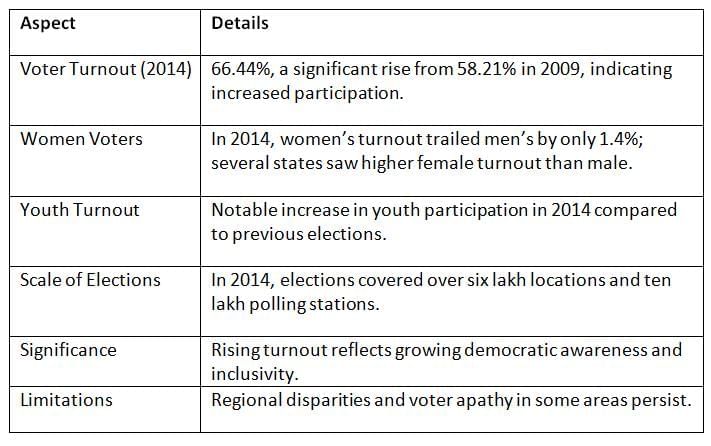
Key Points: The increase in voter turnout, especially among women and youth, highlights India’s evolving democratic participation, though gaps remain in certain regions.
Importance of Voting
Voting is the cornerstone of democracy, empowering citizens to shape governance and hold governments accountable.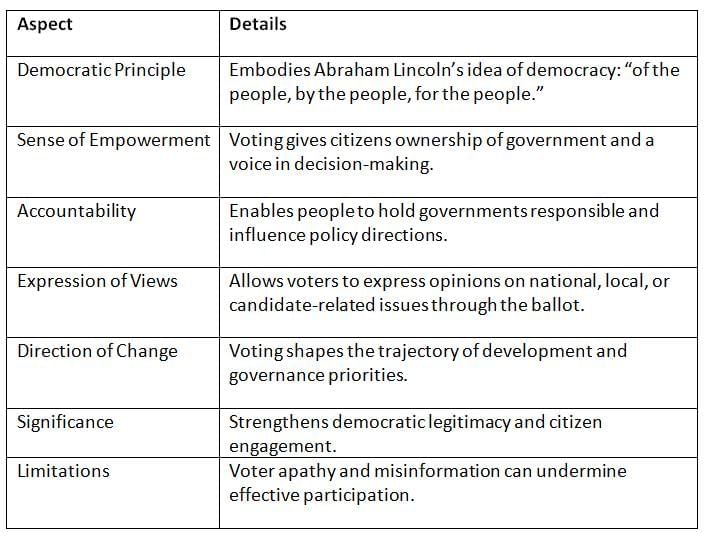
Key Points: Voting is essential for democratic governance, empowering citizens to influence policies and ensure accountability, though challenges like apathy persist.
Recent Electoral Reforms Impacting Voting Behaviour
The Election Commission of India (ECI) has introduced reforms to enhance voter participation, transparency, and inclusivity, influencing voting behaviour.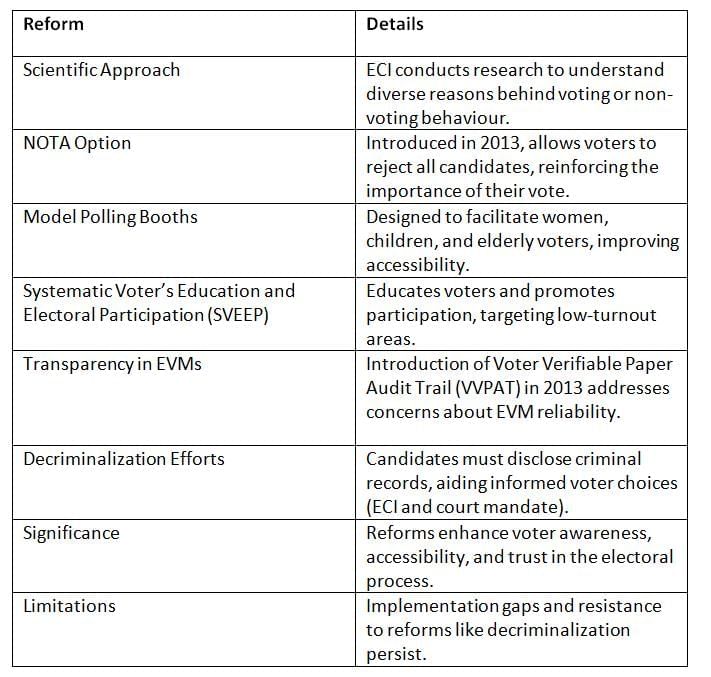
Key Points: Reforms like NOTA, SVEEP, and VVPAT have boosted voter engagement and trust, but challenges in enforcement and awareness remain.
Way Forward for Strengthening Voting Behaviour
To further enhance voter participation and strengthen India’s electoral system, concerted efforts from stakeholders are needed to address existing challenges and explore new approaches.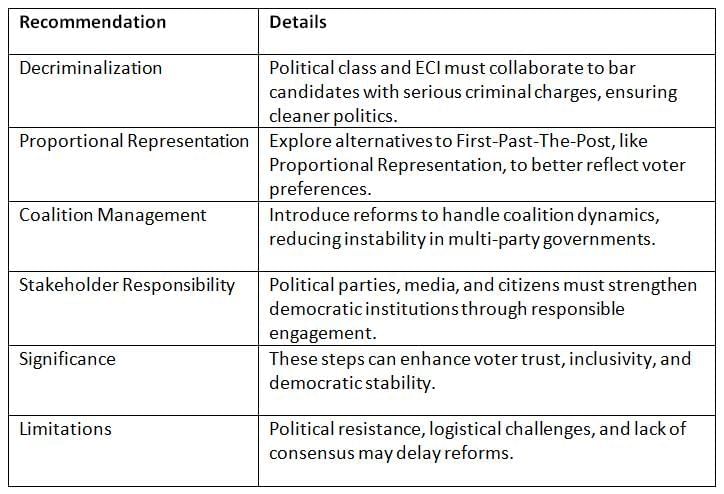 Key Points: Addressing criminalization, exploring new voting systems, and fostering stakeholder collaboration are critical for strengthening voter participation and democracy.
Key Points: Addressing criminalization, exploring new voting systems, and fostering stakeholder collaboration are critical for strengthening voter participation and democracy.
Chronology of Key Developments
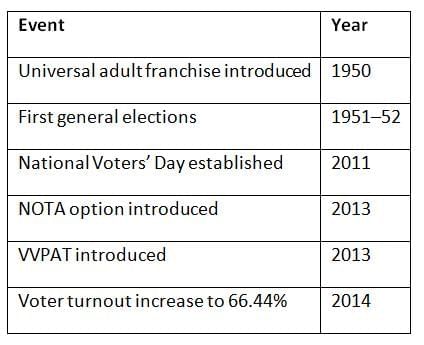
Conclusion
Voting behaviour in India reflects the strength of its democratic ethos, with rising turnout among women and youth signaling increased engagement. Reforms like NOTA, VVPAT, and SVEEP have enhanced accessibility and trust, while challenges like criminalization and voter apathy persist. By addressing these through further reforms and stakeholder collaboration, India can strengthen its electoral system, ensuring a more inclusive and robust democracy.
|
154 videos|973 docs|260 tests
|
FAQs on Cheat Sheet: Voting Behaviour - Indian Polity for UPSC CSE
| 1. What are the key voting statistics that reflect voting behavior trends in recent elections? |  |
| 2. Why is voting considered an essential aspect of democracy? |  |
| 3. What recent electoral reforms have significantly impacted voting behavior? |  |
| 4. What strategies can be implemented to strengthen voting behavior among citizens? |  |
| 5. What have been the key developments in voting rights legislation over the years? |  |















